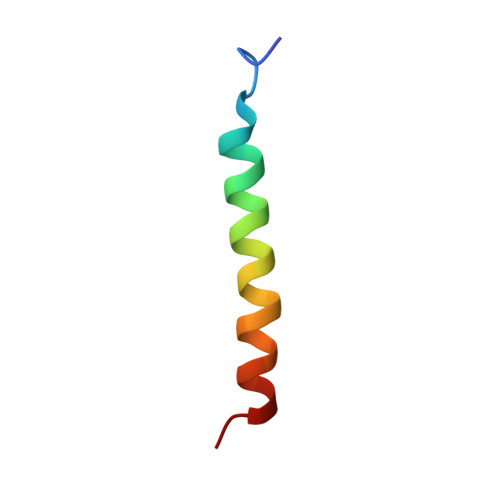Structure and inhibition of the drug-resistant S31N mutant of the M2 ion channel of influenza A virus.
Wang, J., Wu, Y., Ma, C., Fiorin, G., Wang, J., Pinto, L.H., Lamb, R.A., Klein, M.L., Degrado, W.F.(2013) Proc Natl Acad Sci U S A 110: 1315-1320
- PubMed: 23302696
- DOI: https://doi.org/10.1073/pnas.1216526110
- Primary Citation of Related Structures:
2LY0 - PubMed Abstract:
The influenza A virus M2 proton channel (A/M2) is the target of the antiviral drugs amantadine and rimantadine, whose use has been discontinued due to widespread drug resistance. Among the handful of drug-resistant mutants, S31N is found in more than 95% of the currently circulating viruses and shows greatly decreased inhibition by amantadine. The discovery of inhibitors of S31N has been hampered by the limited size, polarity, and dynamic nature of its amantadine-binding site. Nevertheless, we have discovered small-molecule drugs that inhibit S31N with potencies greater than amantadine's potency against WT M2. Drug binding locks the protein into a well-defined conformation, and the NMR structure of the complex shows the drug bound in the homotetrameric channel, threaded between the side chains of Asn31. Unrestrained molecular dynamics simulations predicted the same binding site. This S31N inhibitor, like other potent M2 inhibitors, contains a charged ammonium group. The ammonium binds as a hydrate to one of three sites aligned along the central cavity that appear to be hotspots for inhibition. These sites might stabilize hydronium-like species formed as protons diffuse through the outer channel to the proton-shuttling residue His37 near the cytoplasmic end of the channel.
Organizational Affiliation:
Department of Pharmaceutical Chemistry, University of California, San Francisco, CA 94158-9001, USA.















